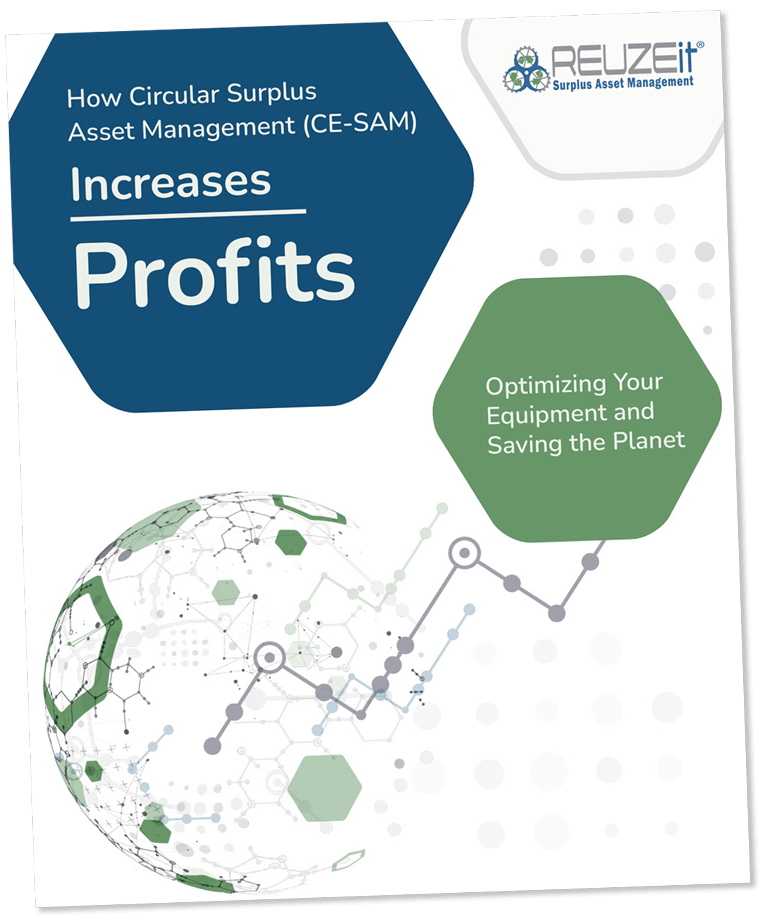By comparing research into the reuse and redeployment of familiar equipment like copiers, electric motors, and routers, REUZEit has developed a model to calculate the carbon footprint reduction when reusing or redeploying essential life sciences equipment – for example, the mass spectrometer and the ultra-low temperature freezer. Both cases are representative of the potential to reduce the carbon footprint of the user through a closed-loop supply chain by reconditioning and redeploying the equipment.
It is possible to make these calculations because only relatively new equipment is reconditioned, and recycled materials are used to make new products like the ones produced out of virgin materials. Input data were obtained from actual recycling of a mass spectrometer and ultra-low freezer from e-Recycling of California, and our own research.

Ultra-low temp, or ULT, freezers are used by the pharmaceutical industry to store drug compounds and biological samples at temperatures reaching -40°C to -150°C. The biological samples play a vital role in research and development for therapeutics to treat rare and chronic diseases. ULT freezers also are used to store vaccines, where temperature uniformity and stability is critical. The general population recently learned of the importance of ULT freezers when the COVID-19 vaccine was first developed and required this type of storage to stay viable.
The global ULT freezer market was $547 million in 2019 and is projected to reach $783 million by 2027. Depending on the manufacturer, capacity, and features, new freezers can range in price from $15,000 – $35,000 each. Approximately 31,320 newly manufactured freezers are expected to be purchased in 2027 globally. On average, a used late-model (less than 5 years old) freezer costs $8,000. These models can be redeployed with or without reconditioning and while still within manufacturer specifications.
By instituting a circular economy, a discount of 20-70% is possible for the new owner while simultaneously adding value to the previous owner, and customers can now be served who might otherwise not be able to afford a new one. Also, an increasing number of customers target buying circular products instead of purchasing new ones. This way, customer value, environmental value, and economic value are created simultaneously.

Image credit: “Atomic Structure and Symbolism: Figure 5” by OpenStax Chemistry, CC BY 4.0.
Another example is the mass spectrometer. This equipment can measure the mass of a molecule only after it converts the molecule to a gas-phase ion. Medical labs employ mass spectrometry to diagnose metabolism deficiencies, to determine whether biomarkers or enzymes are present, and for toxicology testing. To do so, it imparts an electrical charge to molecules and converts the resultant flux of electrically charged ions into a proportional electrical current that a data system then reads. A mass spectrometer must often be coupled with a separation instrument like a gas chromatography (GC) or high-performance liquid chromatography (HPLC) system. This adds complexity and cost, which may be a stimulus to buy reconditioned and refurbished equipment.
The global mass spectrometer market size was $5.89 billion in 2020 and is projected to reach $12.7 billion by 2030. Depending on the manufacturer, capacity, and features, new mass spectrometers can range in price from $200,000 to $1M each. It is expected that 31,750 newly manufactured mass spectrometers will be purchased in 2030 globally.
An average used late-model spectrometer (less than 5 years old) can also be redeployed to meet manufacturer specifications. It ranges in price from $75,000 – $220,000. Like the ULT fridge, it provides a value to acquiring customers by offering cost avoidance ranging between $125,000 – $780,000 per machine.
If 50% of new mass spectrometer purchases were replaced by redeployed alternatives and assuming an average $150,000 discount per products, it could save global buyers almost $2.4 billion annually in direct economic benefits by 2030. New circular segments can also increase total market sales for the vendors, provided new business models are in place.
Our calculations consider three recovery options: direct redeployment, redeployment after reconditioning, and material recycling. Most equipment can go through all three loops sequentially. Clearly, direct redeployment creates the most economic value in direct savings. But, like economic value and from a footprint point of view, the preference is also first to directly redeploy, then redeploy and recondition, then create new products from recycled materials, and lastly create new products from virgin materials.
An increasing number of customers of life science equipment want to buy re-used products. The procurement of circular products creates environmental value, which can be turned into economic value via carbon fees. Based on projected volumes of ULT freezers and mass spectrometers, and assuming that all three recovery options will be applied, by 2030 a total of $580 million could be saved on carbon fees worldwide.
Sourcing value led to direct economic benefits in terms of reduced prices. Customer value was increased because now certain equipment is affordable for customers who cannot afford to buy new products. Information value was not applicable in both examples but may be relevant at some stage in product development.
All forms of closing the loop can significantly contribute to reducing greenhouse gas emissions. Next to reducing greenhouse gasses, scarce materials are saved which is important in view of resource depletion. This makes REUZEit’s SAM system a game-changer. In both cases, multiple values are created.
Although future markets are hard to forecast, the potential is clear. If 50% of newly purchased products are replaced by redeployed products (which is in line with targets of the European Union), buyers will realize direct annual economic benefits by 2027 globally. Moreover, new segments in the market can be developed. For these reasons, new circular economy business models are indispensable.
For more information or to Join this REUZE Revolution, please visit us at www.REUZEit.com



